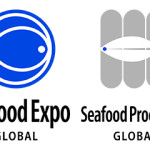Kverva, Norway-headquartered salmon farmer SalMar ASA saw declines stemming from the COVID-19 pandemic, but still managed to have a solid year financially.
SalMar delivered total operational earnings before interest and taxes (EBIT) of NOK 413.8 million (USD 49.6 million, EUR 40.5 million) in the fourth quarter of last year, down from NOK 658.1 million (USD 78.9 million, EUR 64.5 million) in Q4 2019.
Operational EBIT for the full-year 2020 totaled NOK 3 billion (USD 359.3 million, EUR 293.8 million), while the company’s Norwegian operations posted an operational EBIT of NOK 433.5 million (USD 51.9 million, EUR 42.5 million) in Q4 and NOK 3.06 billion (USD 366.5 million, EUR 299.6 million) for the year as a whole, corresponding to an increase of 3 percent on 2019.
Delivering the group’s latest results, SalMar CEO Gustav Witzøe said 2020 had been a challenging year, characterized by “significant uncertainty” for the aquaculture industry, and including in the fourth quarter.
“At the start of the year, few people would have dared to hope that we would post a 2020 operational result that was as good as the year before. Nevertheless, through a strategic and operational focus, as well as employees who have demonstrated a formidable ability to adapt to new working practices, we have done just that,” Witzøe said.
SalMar harvested a total of 43,600 metric tons (MT) of salmon in the fourth-quarter 2020, compared with 40,300 MT in the same period of the year before. Operational EBIT-per-kilogram for the last quarter came to NOK 9.50 (USD 1.14, EUR 0.93), down from NOK 16.31 (USD 1.95, EUR 1.60) in Q4 2019.
The decrease in operational EBIT per kilogram was largely attributed to a 25 percent lower average salmon price in the Q4 2020 compared with the same period the year before. EBIT-per-kilogram for 2020 came to NOK 18.62 (USD 2.23, EUR 1.82), down NOK 1.42 (USD 0.17, EUR 0.14) per kilogram from 2019.
According to SalMar, its Fish Farming Central Norway segment posted a solid result, and reaped the rewards of sound operations and a good biological performance. It harvested 20,900 MT of salmon, compared with 24,400 MT in Q4 2019, and generated gross operating revenues of almost NOK 1.1 billion (USD 131.8 million, EUR 107.7 million), compared with more than NOK 1.3 billion (USD 155.7 million, EUR 127.3 million) a year previously.
The autumn-2019 generation accounted for the entire volume harvested during the period. In Q1 2021, the segment will finish harvesting the autumn-2019 generation and start harvesting the spring-2020 generation. The region’s Q1 2021 costs are expected to remain at similar levels, although the volume harvested is expected to be slightly lower than a year previously.
SalMar said its Fish Farming Northern Norway segment posted satisfactory results in the last quarter, with a harvest of 19,100 MT, an increase of 5,700 MT year-on-year, and its gross operating revenues climbing to NOK 822 million (USD 98.5 million, EUR 80.5 million).
Some 80 percent of the volume harvested in the region derived from fish transferred to sea farms in the spring of 2019, a generation that has had strong biological performance and contributed to lower costs at harvest. Harvesting of the autumn-2019 generation – also demonstrating a good biological performance – started in Q4 2020, and will continue in the current quarter, the company said. For Q1 2021, the segment expects slightly higher costs and a substantially lower harvested volume compared with the quarter before.
The Q4 report also confirmed that 2020 was a difficult year for Icelandic Salmon (formerly Arnarlax), which experienced substantial challenges at the start of the year. The company started harvesting its 2019-generation in Q4 2020, and while these fish have a substantially lower cost at harvest, the low price achievement led to an operating loss in the period.
SalMar said the company is drawing on the lessons learned in 2020, and is optimistic with respect to 2021, a year in which the biological status of the fish held at its sea farms is significantly better, it said.
Icelandic Salmon harvested 3,600 MT of salmon in Q4 2020, up from 2,600 MT a year before. It generated gross operating revenues of NOK 173 million (USD 20.7 million, EUR 16.9 million), compared with NOK 165 million (USD 19.8 million, EUR 16.2 million) in Q4 2019.
For 2021, SalMar expects to harvest a total 163,000 MT in Norway and 14,000 MT in Iceland.
Meanwhile, the company’s Sales and Processing segment largely overcame Q4 2020’s “high degree” of market uncertainty brought by the COVID-19 pandemic to posted a “satisfactory” operational EBIT of NOK 73 million (USD 8.7 million, EUR 7.1 million) in the period.
For 2020 as a whole, the segment’s operational EBIT totaled NOK 282 million (USD 33.8 million, EUR 27.6 million), up from NOK 124 million (USD 14.9 million, EUR 12.1 million) the year before.
Photo courtesy of SalMar







